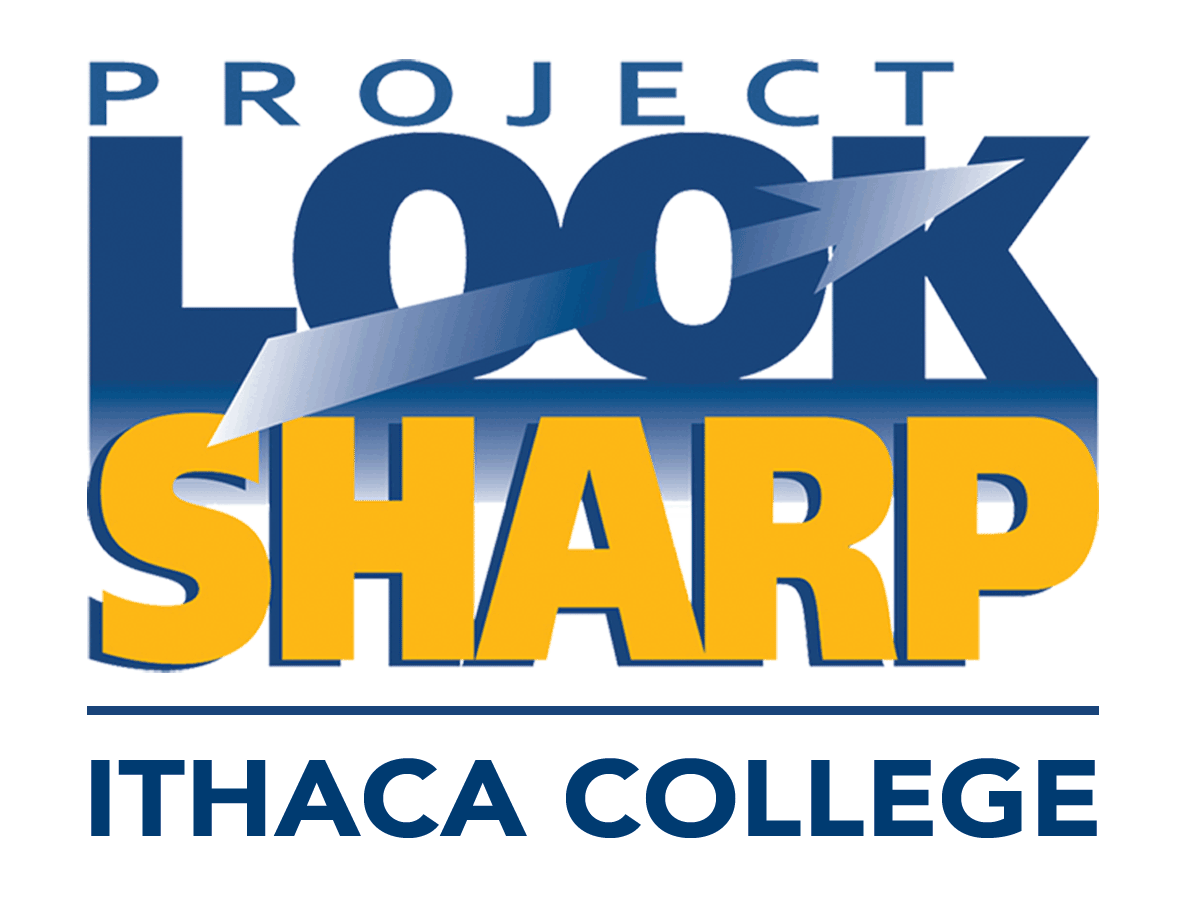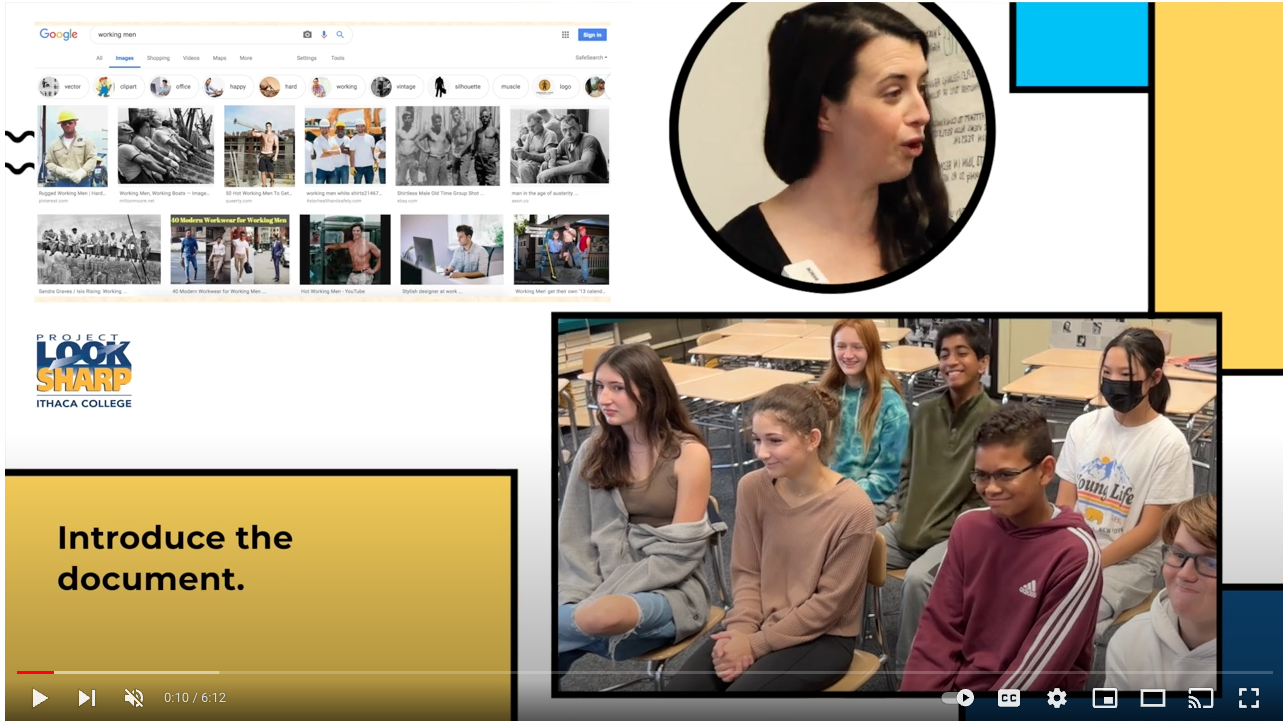Your Search Results (571) sorted by newest
Female Superheroes: Changing Powers Over Time
In this media literacy activity students analyze female superheroes from comics of the 1960s and 2010s for messages about changes in media representations of gender and power across fifty years.
15-30 Minutes
The Early Feminists and Haudenosaunee Women: The Origins of Women’s Rights in the U.S.
Students analyze and ask questions about a 1914 political cartoon and a 2020 documentary film clip for messages about the impact of Haudenosaunee women on the early women’s rights movement in the United States.
15-30 Minutes
Pride Month: Representation and Authorship
Students analyze short Pride Month videos for messages about LGBTQ history and culture and its representation.
30-60 Minutes
Asian American and Pacific Islander History and Culture: Representation and Authorship
Students analyze short videos for messages about Asian American and Pacific Islander histories and cultures and their representation.
30-60 Minutes
Japanese Internment During WW2
Students analyze four short video representations about Japanese internment during WWII for messages about this event, how it is constructed, its historical and cultural context, and our understanding of history.
30-60 Minutes
The Chinese Exclusion Act - Media and Messages
Students analyze late 19th and early 20th century legislation and Senate testimony, legal documents, political cartoons, a pamphlet and handbill, a newspaper front page and illustration and advertisements for messages about Chinese immigrants and the Chinese Exclusion Act.
30-60 Minutes
Starter Kit for US History & Government 9-12
This guide gives users a brief overview of our approach (question-based media decoding) and materials (e.g., lessons) available for free from the Project Look Sharp website for a particular level and subject.
View
Constructivist Media Decoding
Media Literacy Lesson Design
Document Selection
Question Design
Social Studies
Starter Kit for Global Studies 9-12
This guide gives users a brief overview of our approach (question-based media decoding) and materials (e.g., lessons) available for free from the Project Look Sharp website for a particular level and subject.
View
Constructivist Media Decoding
Media Literacy Lesson Design
Document Selection
Question Design
Social Studies
Starter Kit for Social Studies 6-8
This guide gives users a brief overview of our approach (question-based media decoding) and materials (e.g., lessons) available for free from the Project Look Sharp website for a particular level and subject.
View
Constructivist Media Decoding
Media Literacy Lesson Design
Document Selection
Question Design
Social Studies
Psychology
Starter Kit for Elementary All Subjects 3-5
This guide gives users a brief overview of our approach (question-based media decoding) and materials (e.g., lessons) available for free from the Project Look Sharp website for a particular level and subject.
View
Constructivist Media Decoding
Media Literacy Lesson Design
Document Selection
Question Design
Social Studies
English Language Arts
Health
Science And Environment
Math
Arts
Psychology
Media Production
Origins of Hip Hop: Considering "The Message"
Students analyze song lyrics, a music video and an excerpt from a documentary for messages about the origins of hip hop as reflected in the song, “The Message.”
15-30 Minutes
Migrant Mother: Photos as Fact or Opinion
Students analyze Dorothea Lange’s “Migrant Mother” photograph and reflect on the constructed nature of photographs by evaluating whether photographs are fact, opinion, or something else.
15-30 Minutes
Women in Hip Hop: "Ladies First"
Students analyze song lyrics, a music video and an excerpt from a documentary for messages about women’s place in hip hop in Queen Latifah’s song “Ladies First.”
15-30 Minutes
Demonstration Video: Gender Stereotypes and Google Algorithms
Middle School teacher, Mary Kate Longeran, uses the Project Look Sharp lesson “Google Image Searches: Do they Promote or Counter Stereotypes?” to lead her students through an analysis of stereotypes and algorithmic bias. (Total Time: 6:10) Published 2023
View
Constructivist Media Decoding
Media Literacy Lesson Design
Youth Culture And New Technologies
Assessing Credibility & Bias
Reflecting Diversity
Question Design
Social Studies
English Language Arts
Pre-service Teacher Education
Veterans’ Statues: Reading the Messages
Students analyze sculptures of war veterans for messages about purpose, point of view and meaning.
15-30 Minutes
Mr. Rogers: What Do We Do When Our Feelings Are Hurt?
In this media literacy activity students analyze clips from a documentary film and a feature film about Mr. Rogers for messages about storytelling in film and about how to deal with difficult feelings.
15-30 Minutes
How Do We Identify Good Sustainability Stories? (Upper Elementary)
Media literacy and critical thinking lesson analyzing videos to discern messages about how videos can tell stories to inform and engage the public about sustainability issues and initiatives.
This lesson is part of a "kit" or collection of media decoding lessons on a particular topic. You can explore that kit using the link below:
Unit: ProductionKit: Media Constructions of Sustainability: Upper Elementary
Over 60 Minutes
Proclamation of 1763
Media literacy and critical thinking lesson about Native American and colonial perspectives on the Proclamation of 1763.
This lesson is part of a "kit" or collection of media decoding lessons on a particular topic. You can explore that kit using the link below:
Kit: Causes of the American Revolution
15-30 Minutes
Congressional Blog Posting on Immigration Reform
Students analyze a 2009 Congressional blog post for messages about immigration reform and about target audience. This simple decoding activity has been taken from a larger lesson with many slides titled “The Law of Immigration." To access this lesson, type the title with quotes into the PLS keyword search bar.
Under 15 Minutes
Arguing For Freedom
Media literacy and critical thinking lesson using diverse media imagery to teach about the history of the movement to abolish slavery in the United States in the early and mid-19th century.
This lesson is part of a "kit" or collection of media decoding lessons on a particular topic. You can explore that kit using the link below:
Unit: Abolition of SlaveryKit: Media Constructions of Social Justice
30-60 Minutes, Over 60 Minutes




















